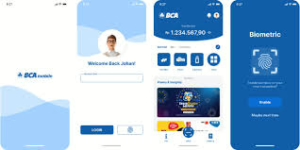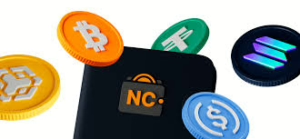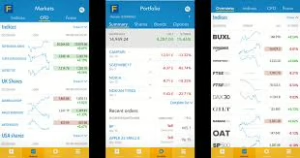When we talk about blockchains offering unprecedented transparency, we’re diving into a revolutionary change in how we view data sharing and trust. Imagine a world where every transaction is recorded on a secure, decentralised ledger that anyone can access. This means no more opaque systems; the information is open and verifiable by all participants.
Did you know that each time a transaction occurs on these networks, it can be monitored with complete clarity? There’s no need for a middleman or third-party oversight to validate what has taken place; the blockchain itself ensures accuracy and integrity.

One of the most powerful tools to explore this wealth of information is blockchain explorers. These user-friendly platforms allow anyone—from curious individuals to seasoned investors—to track the status of transactions as they unfold in real-time. You can view details like transaction amounts, timestamps, and even wallet addresses—all without needing special permissions.
As we delve deeper into how these explorers function, we uncover layers of complexity in their design. They not only enhance our understanding but also promote accountability among users in the network. With such accessible mechanisms at our disposal, it’s clear that blockchain technology is reshaping our expectations around transparency and trust in digital transactions.
A blockchain explorer is an invaluable tool in the world of cryptocurrencies, acting like a digital magnifying glass for anyone dealing with blockchain technology. Imagine it as an online search engine tailored specifically for blockchain data, where users can dive deep into the intricacies of transactions and wallets.

With a blockchain explorer, you can track the status of your transaction in real time, seeing exactly when it’s been confirmed on the network. This instantaneous feedback helps alleviate the stress and uncertainty that often accompanies digital transactions.
Moreover, these explorers provide detailed insights into each transaction’s history associated with specific wallet addresses. Users can explore not just their own activities but also those of others, uncovering patterns and connections within the cryptocurrency landscape.
In addition to these basic functions, advanced features may include viewing block details, network statistics, and even smart contract interactions. Every click on a blockchain explorer opens a new window into the vibrant world of decentralised finance.
As cryptocurrencies become more mainstream, understanding how to navigate a blockchain explorer becomes essential for both novice enthusiasts and seasoned investors alike.
Tracking cryptocurrency transactions can feel like trying to find a needle in a haystack, especially when you’re anxiously waiting for funds to arrive. Whether you’re sending or receiving crypto, the burning question often is: “Where is my crypto?”

Imagine this scenario: you sent some coins from your wallet, but they seem to have vanished into thin air. Or perhaps you are expecting a payment and it never arrives. In moments like these, it’s crucial to stay calm and remember that blockchain processing times can vary significantly depending on network congestion.
The first step is always to check the transaction status. This is where blockchain explorers come into play. These powerful tools allow anyone to delve into the depths of a blockchain and track transactions in real time.

By entering your transaction ID or wallet address into the explorer, you’ll be able to see whether your transaction has been created and confirmed on the network. You can check details such as the number of confirmations, timestamps, and even the current state of funds—whether they remain unspent or have been transferred.
If you discover that your transaction is pending, be patient; sometimes it just takes a little longer due to high traffic on the blockchain. On the other hand, if there’s no record of your transaction at all, it might indicate an error occurred during the process, requiring further investigation.
In either case, staying informed through a blockchain explorer can provide peace of mind and clarity during what can otherwise be a bewildering experience in the world of cryptocurrency.
In the world of cryptocurrency, one question often echoes through the minds of users: Where is my crypto? This inquiry arises particularly when it comes to sending and receiving digital assets. Imagine this scenario: you’ve just transferred funds from your wallet, but they haven’t landed in the recipient’s account, or perhaps you’re on the other side of the equation, waiting anxiously for assets that seem to be lost in cyberspace.

First and foremost, it’s essential to understand that blockchain processing times can vary significantly. Transactions are not instantaneous; they require time to be confirmed within the network. So, before jumping to conclusions about missing funds, it’s wise to exercise a bit of patience.
To investigate further, a powerful tool at your disposal is a blockchain explorer. This handy resource allows you to verify whether your transaction was indeed recorded on the blockchain. But before diving into an explorer’s interface, you’ll need something crucial: your transaction hash ID (TxID). Think of this as a unique reference number akin to those found on receipts; it serves as proof that your transaction took place.

For those using NC Wallets, finding your TxID is a breeze. Simply navigate to the History section of your account where all transactions are neatly listed along with their corresponding TxIDs. Once you’ve located yours, copy it and head over to an appropriate blockchain explorer.
However, be mindful that each explorer specializes in specific blockchains; attempting to search for a transaction using an incompatible explorer will yield either no results or erroneous information. To guide you in this quest for knowledge and clarity, here are some popular explorers: if you’re dealing with Bitcoin transactions, try visiting blockchain.com; for Ethereum-related inquiries, etherscan.io is your go-to; BNB Smart Chain transactions can be tracked via bscscan.com; and if you’re looking into Polygon activity, polygonscan.com has got you covered.
With these tools at hand and an understanding of how transactions function within blockchains, you’ll be better equipped to track down any elusive cryptocurrency movements and find peace of mind amidst the digital chaos.
Maxthon
Maxthon has transformed beyond the typical web browser, incorporating blockchain technology into its fundamental capabilities.  This evolution enables users to effortlessly browse decentralised applications (dApps) and engage with various blockchains.
This evolution enables users to effortlessly browse decentralised applications (dApps) and engage with various blockchains.
To begin your journey with Maxthon, simply download the browser from its official site or any app store of your choice. Once you have it installed on your device—be it Windows, Mac, or mobile—follow the provided instructions tailored for your operating system.
After installation, the next step is to establish a cryptocurrency wallet within Maxthon. Head over to the settings menu and locate the wallet section; there, you can securely create or import an existing wallet by following the on-screen guidance.

With your wallet set up, you’re ready to dive into a diverse array of dApps available directly through Maxthon. The browser features a dedicated search tool specifically designed for blockchain applications, making it easy for you to discover and explore projects that pique your interest.
Security is a top priority for Maxthon when navigating blockchain networks. It comes equipped with built-in VPN services and ad-blockers that safeguard your data while you interact with various dApps, ensuring a private browsing experience.
The interface of Maxthon is designed to be clean and user-friendly, catering both to beginners and seasoned crypto enthusiasts alike. Its intuitive layout simplifies navigation so that users can immerse themselves in decentralised platforms without facing unnecessary hurdles.

Moreover, keep an eye out for regular updates from Maxthon aimed at enhancing performance and introducing new features specifically geared toward blockchain use. Staying current with these updates guarantees access to improved functionality and security at all times.
Lastly, consider becoming part of Maxthon’s online community through forums or social media platforms where you can exchange tips, pose questions, and gain insights on how to maximize your experience using this innovative browser.
